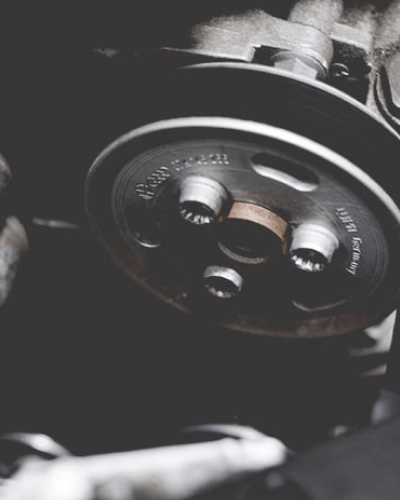Share On :
Owning a car is a big responsibility. Regular maintenance and timely repairs can keep your vehicle running smoothly, save you money on costly repairs, and ensure safety on the road. Whether you’re a beginner or a seasoned car owner, this guide will walk you through the essential aspects of car care.
1. Regular Car Maintenance Tips
a) Check and Change Engine Oil
- The engine oil lubricates moving parts, reduces friction, and keeps the engine cool.
- Check your oil level every month and change it as per the manufacturer’s recommendations.
- Use the correct oil type (synthetic, semi-synthetic, or conventional).
Image Suggestion: A person checking the engine oil using a dipstick.
b) Inspect Tires Regularly
- Check tire pressure at least once a month and before long trips.
- Rotate your tires every 5,000 to 8,000 miles for even wear.
- Inspect tread depth to ensure safe driving conditions.
Image Suggestion: A close-up of a person using a tire pressure gauge on a car tire.
c) Battery Maintenance
- Clean battery terminals to prevent corrosion.
- Check for loose or damaged cables.
- Replace your battery every 3-5 years or when it shows signs of weakness.
Image Suggestion: A mechanic cleaning a car battery terminal.
d) Brake System Check
- Listen for squeaking or grinding noises when braking.
- Check brake fluid levels and top up if necessary.
- Replace brake pads when they show signs of excessive wear.
Image Suggestion: A mechanic inspecting car brakes.
e) Keep Fluids Topped Up
- Transmission fluid, coolant, brake fluid, power steering fluid, and windshield washer fluid should be checked regularly.
- Look for leaks under the car.
Image Suggestion: A close-up of different car fluid reservoirs with labeled caps.
2. Basic Car Repairs You Can Do Yourself
a) Replacing Windshield Wipers
- Buy the correct size wipers for your car.
- Remove the old wipers and attach the new ones following the instructions on the package.
Image Suggestion: Hands installing a new windshield wiper.
b) Changing a Flat Tire
- Use a jack to lift the car.
- Remove the lug nuts, replace the tire, and tighten the nuts in a star pattern.
- Check the spare tire pressure before driving.
Image Suggestion: A person using a lug wrench to remove a car tire.
c) Changing Spark Plugs
- Locate the spark plugs, remove them with a socket wrench, and replace them with new ones.
- Ensure the plugs are properly gapped.
Image Suggestion: A hand holding a spark plug near a car engine.
d) Replacing an Air Filter
- Remove the air filter cover, take out the old filter, and insert a new one.
- This improves engine efficiency and fuel economy.
Image Suggestion: A mechanic replacing a car air filter.
e) Fixing Minor Scratches
- Use a scratch repair kit or touch-up paint to cover small scratches.
- Buff the area for a smooth finish.
Image Suggestion: A person applying scratch remover to a car.
3. Long-Term Car Care Tips
a) Regular Professional Servicing
- Take your car for professional servicing every 6-12 months.
- Mechanics can spot issues before they become serious.
b) Keep Your Car Clean
- Wash your car regularly to prevent dirt and rust buildup.
- Wax your car every 3-6 months to protect the paint.
c) Drive Smoothly
- Avoid sudden acceleration and hard braking.
- Driving gently extends engine and brake life.
d) Store Your Car Properly
- If you’re not using your car for a long time, park it in a garage and disconnect the battery.
- Use a car cover to protect it from dust and sun damage.
Conclusion
By following these car maintenance and repair tips, you can extend your car’s lifespan, improve fuel efficiency, and avoid costly repairs. A little effort goes a long way in keeping your vehicle in top condition!


0 Comments